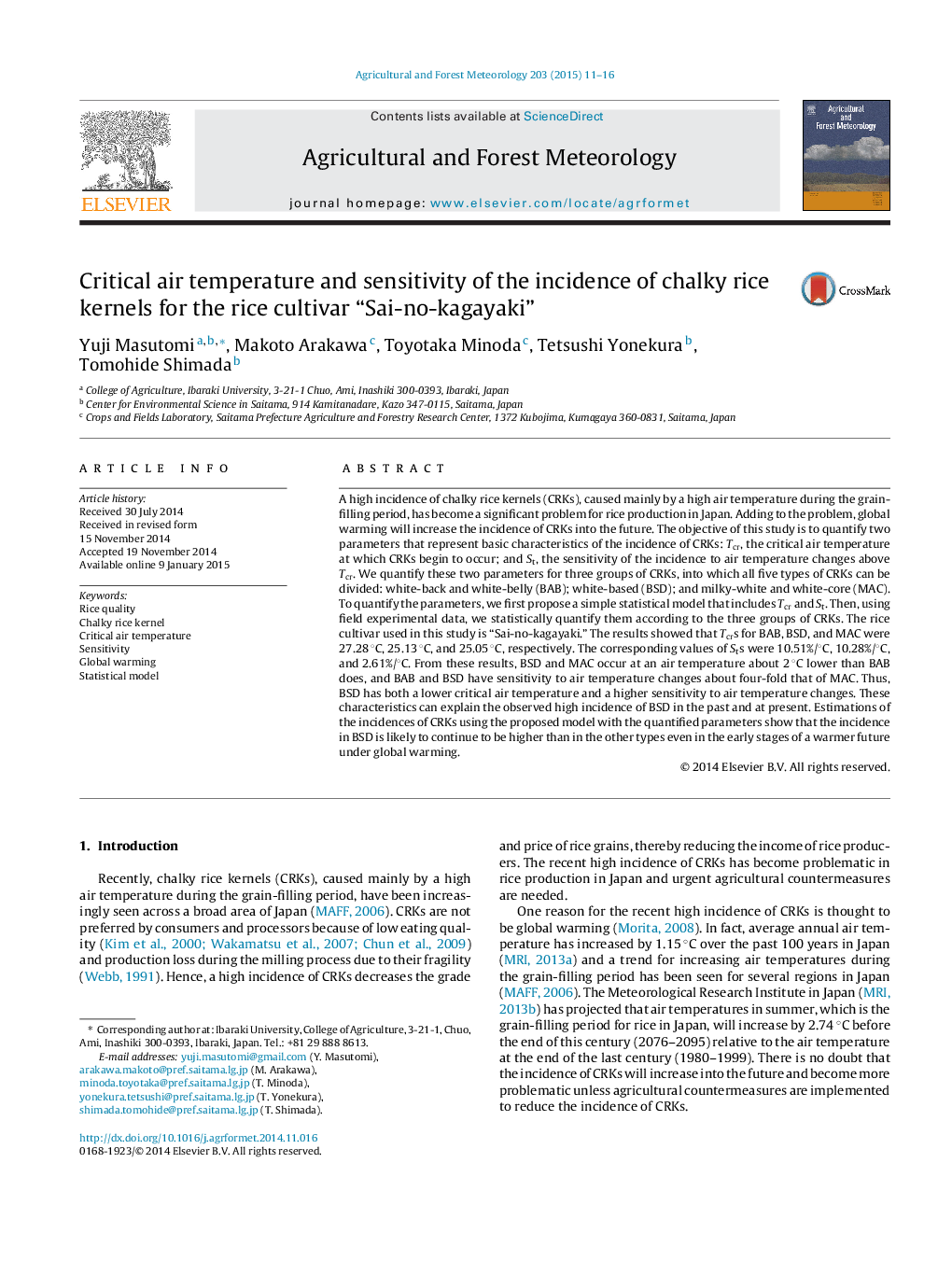| Article ID | Journal | Published Year | Pages | File Type |
|---|---|---|---|---|
| 6537346 | Agricultural and Forest Meteorology | 2015 | 6 Pages |
Abstract
A high incidence of chalky rice kernels (CRKs), caused mainly by a high air temperature during the grain-filling period, has become a significant problem for rice production in Japan. Adding to the problem, global warming will increase the incidence of CRKs into the future. The objective of this study is to quantify two parameters that represent basic characteristics of the incidence of CRKs: Tcr, the critical air temperature at which CRKs begin to occur; and St, the sensitivity of the incidence to air temperature changes above Tcr. We quantify these two parameters for three groups of CRKs, into which all five types of CRKs can be divided: white-back and white-belly (BAB); white-based (BSD); and milky-white and white-core (MAC). To quantify the parameters, we first propose a simple statistical model that includes Tcr and St. Then, using field experimental data, we statistically quantify them according to the three groups of CRKs. The rice cultivar used in this study is “Sai-no-kagayaki.” The results showed that Tcrs for BAB, BSD, and MAC were 27.28 °C, 25.13 °C, and 25.05 °C, respectively. The corresponding values of Sts were 10.51%/°C, 10.28%/°C, and 2.61%/°C. From these results, BSD and MAC occur at an air temperature about 2 °C lower than BAB does, and BAB and BSD have sensitivity to air temperature changes about four-fold that of MAC. Thus, BSD has both a lower critical air temperature and a higher sensitivity to air temperature changes. These characteristics can explain the observed high incidence of BSD in the past and at present. Estimations of the incidences of CRKs using the proposed model with the quantified parameters show that the incidence in BSD is likely to continue to be higher than in the other types even in the early stages of a warmer future under global warming.
Related Topics
Physical Sciences and Engineering
Earth and Planetary Sciences
Atmospheric Science
Authors
Yuji Masutomi, Makoto Arakawa, Toyotaka Minoda, Tetsushi Yonekura, Tomohide Shimada,
